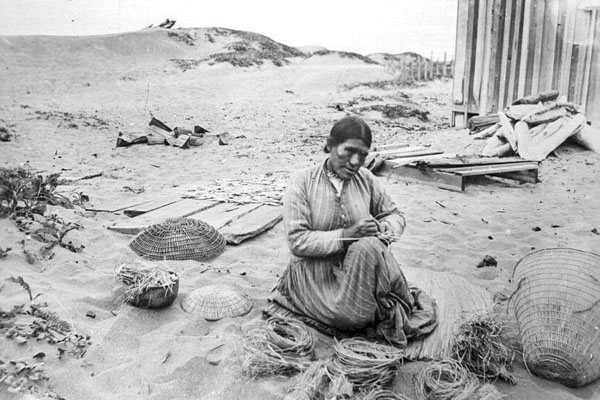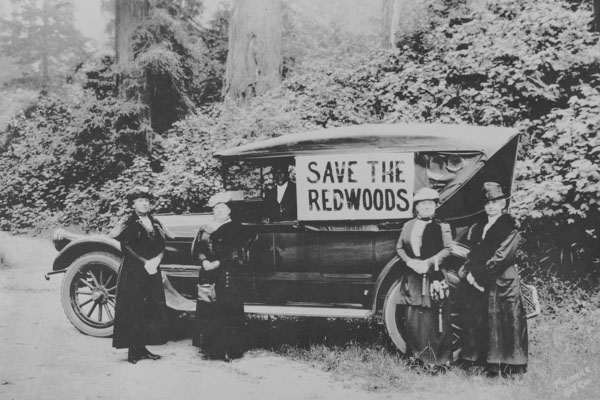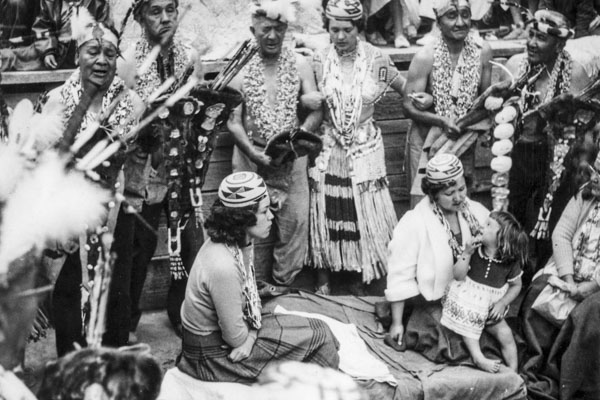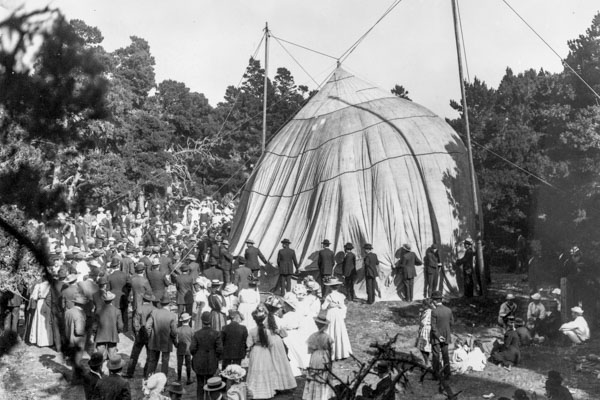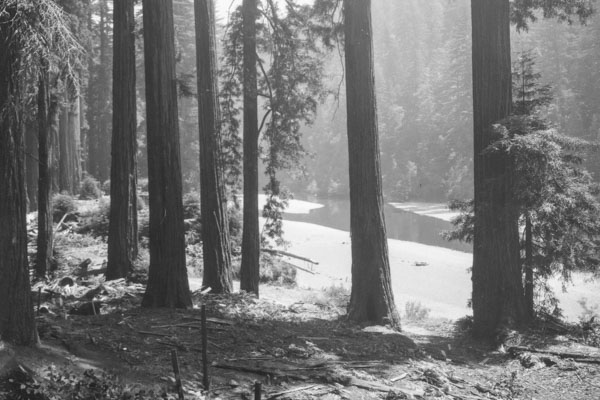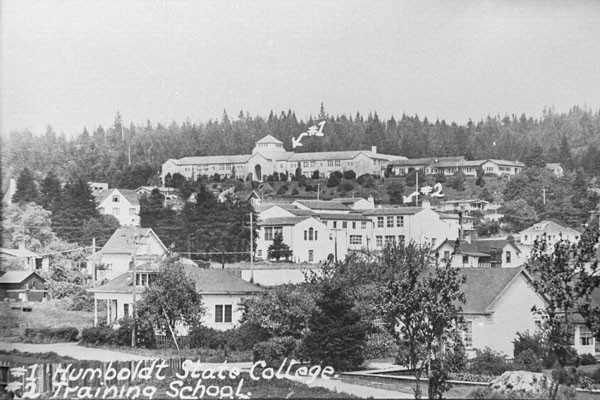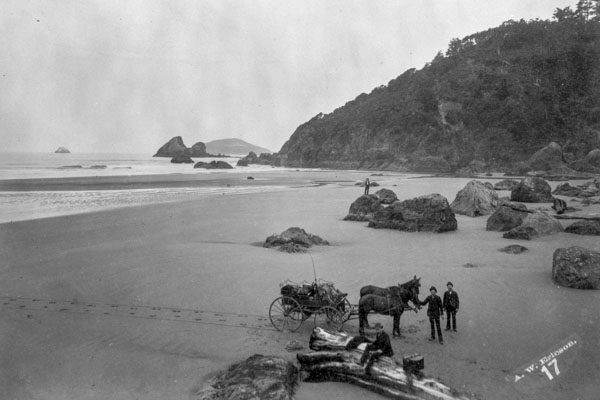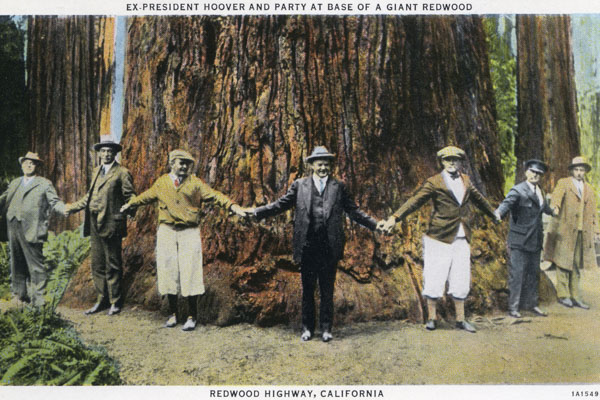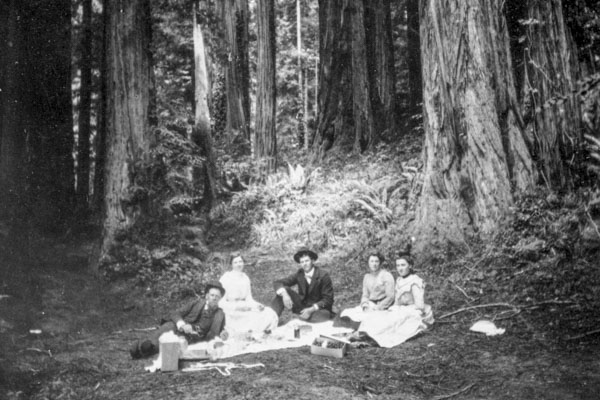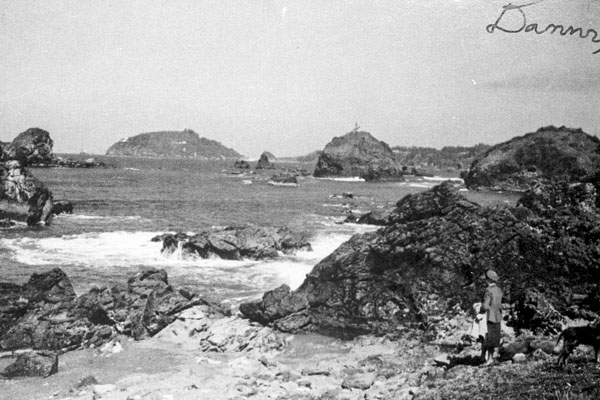You are here
Center for Indian Community Development Collection - Finding Aid
Abstract
Copyright
Scope and Content by Series
Arrangement of the Collection![]() Container List
Container List
Bibliography of Publications derived from this collection
Related Collections
Collection Number
2013.01
Contact Information
The University Library, Special Collections
Cal Poly Humboldt
One Harpst Street
Arcata, California 95521
URL: https://specialcollections.humboldt.edu/center-indian-community-developm...
Processed By
Susan Gehr, MA, MLIS
With assistance from Sean Berry and Ruby Buentello
Date Collection Processed
2012-2015
Language
Materials in this collection are primarily in English, Hupa, Karuk, Tolowa, and Yurok.
There are a few items available in Cahto, Lassik, Tututni, Wailaki, Wiyot, and Yuki.
Many of the Hupa, Karuk, Tolowa and Yurok materials created in the 1970s and 1980s are in the Unifon spelling system, while other materials are written in linguistic or practical spelling systems.
Collection Contributors
Center for Indian Community Development Staff
Bennett, Ruth
Burcell, Suzanne M.
Devine, Zo
Golla, Victor
Hill, Nancy
Murison, William
Parsons, Tom
Richardson, Nancy (see also Riley, Nancy)
Risling, Lois
Center Language Consultants
Hupa
Baldy, Ray
Beck, Ruth
Brown, Oscar
Brown, Sam
Bussell, Gordon
Carpenter, Calvin
Carpenter, William
Davis, Fred
Hayden, Alvira
Hostler, Jake
Jackson, James "Jimmy"
Jackson, Louisa (Louise?)
Jackson, Ned
Jackson, Silis
Jarnaghan, Oscar Elmer
Lara, Callie
Leach, Ruel
Mattz, Pam
McWilliams, Minnie
Mooney, Marian
Peter, David "Doc"
Pratt, Alice
Pratt, Vernon "Sonny"
Randall, Pearl
Reeves, Minnie
Sherman, Hermanv Socktish, Rudolph
Stone, Clarissa
Karuk
Bright, William
Case, Elizabeth
Cook, Frank
Davis, Shan
Fisher, Fannie
Goodwin, Norman
Guy, Gladys
Hillman, Leaf
Howerton, Stella
Lang, Julian
Offield, Bob
Richardson, Nancy
Risling, Lyn (see also Shaw, Carolyn Risling)
Smith, Vina
Super, Emmett
Super, Leonard "Uncle"
Super, Violet "Auntie"
Tolowa
Bommelyn, Loren
Brown, Amelia
Green, Betty
Humphrey, Berneice
Yurok
Burns, Charley
Douglas, Frank
Exline, Jessie
Figueroa, Aileen
George, Dewey
James, Jimmy
James, Josephine
Littlefeather, Don
Logan, Buck
Logan, Eleanor
Marks, Milton
Moore, Don
Moore, Glenn
Smoker, Earl
Smoker, William
Trull, Georgiana
Turner, Henrietta
Turner, Michael
Dates Covered by Collection
1870s-2013; bulk dates 1966-2013
Size of Collection
116 boxes, 1 cabinet, and 3 map drawers
Abstract
In 1966, the Center for Community Development (CCD) was established at Humboldt State University (HSU) to provide services and outreach to American Indian communities in Indian Country on behalf of the university. The name was changed to the Center for Indian Community Development (CICD) in 1991. The materials in this collection include Hupa, Karuk, Tolowa and Yurok language materials, educational materials, and documentation of the Center's community and economic development projects. Center publications are also listed in this guide's bibliography with links to the HSU Library catalog and Humboldt Digital Scholar.
Access
This collection is processed. It is currently available by appointment.
The Center's Ethnographic Transcripts Policy of 1993 applies to the audio recordings.
Copyright
Cal Poly Humboldt holds copyright to the materials of this collection which were created by employees and contractors of Humboldt State University. For materials created by others, copyright has not been assigned to Cal Poly Humboldt. To obtain permission to publish or reproduce in any format, please contact the Special Collections Librarian.
Acquisition Information
This collection was created by the Center for Indian Community Development at Humboldt State University as a product of their community development and Native American languages revitalization work. This collection was transferred to the University Library when CICD was closed in August 2013.
An additional donation was made by Pam Martin, daughter of Tom Parsons, in 2013.
Administrative History
In 1966, Humboldt State University (HSU) established the Center for Community Development (CCD) to provide services and outreach to American Indian communities in Indian Country on behalf of HSU. The name was changed to the Center for Indian Community Development (CICD) in 1991.
In 1967, Tom Parsons became the Center's director. Towards identifying areas in which the Center could connect the University's resources with tribal priorities, the desire to revitalize languages and cultures was named as one goal that many local tribes shared. Beginning with the Hupa language as the nearest tribe with living fluent speakers, the Center offered to help establish and sponsor school-based and community-based language classes and with transcribing the language into a phonetic spelling system called Unifon, which was developed and promoted by The Unifon Alphabet Foundation (The Foundation for a Compatible & Consistent Alphabet, or F.C.C.A.). Soon afterwards, the Center became involved with the Tolowa, Yurok and Karuk languages, establishing classes in the communities of Crescent City, McKinleyville, Hoopa, Weitchpec, Happy Camp and Orleans. Center staff also developed teaching materials and publications in support of the language program.
Ruth Bennett worked for the Center in several capacities, including Bilingual Education Program Director (1978-1988) and Ethnographic Researcher/Technical Writer (1993-2011) until her retirement. Bennett facilitated and recorded many of the community classes from the 1970s to the early 2000s. Bennett edited many of the publications and printed materials that were used by the various communities. Bennett also provided copies of audiotapes upon request once transcriptions had been made and approved by recorded participants, in compliance with the Center's Ethnographic Transcriptions Policy of 1993.
After Tom Parsons retired in 1988, Victor Golla served as director until June 1991. Lois Risling was appointed director in August 1991, and she retired in 2007. Zo Devine served as director until the Center's closing in 2013 except when Jonathan Damp briefly served as director in 2009.
The Center facilitated mutually beneficial partnerships between American Indian community members, tribes, Indian organizations, governmental agencies representatives and university departments such as Fisheries, Teacher Education, Social Work, Nursing, History and Economics.
The language curriculum was created and used in Humboldt State University's Multiple Subjects American Indian Bilingual Cross-cultural Teacher Training and Credentialing Program.
Frequently, the goals and needs within tribal communities are intertwined with state and federal agencies and services such as public school districts, NOAA, the United States Department of Agriculture and Caltrans. Native and non-Native students have spearheaded projects such as graphic arts and book publications. Through its Graphics Department, the Center produced materials including curriculum, dictionaries, business plans, reports, cassette tapes, videos, brochures and computer programs.
The Center has posted its enabling documents and history on Humboldt Digital Scholar at http://humboldt-dspace.calstate.edu/handle/2148/1235.
In a 1988 letter, the HSU Dean of Behavioral and Social Services at HSU explained the history of the Center's enabling legislation and mission. In the 1974-5 session of the California legislature, the Program Change Proposal of the CSU System Support Budget officially defined the mission of the Center for Community Development, "…to provide leadership in relating university resources to the educational, economic, social and cultural needs of the north coast population, with special emphasis on the Indian population." The full document is available at http://hdl.handle.net/2148/1238.
Over the years, the Center's primary services have included:
- American Indian languages and material development.
- Ethnographic and linguistic research and coordination for linguistic and ethnographic projects.
- Grant writing and grants administration.
- Development of materials and resources such as books, audio and video resources, language curricula, and Tribal archives.
- Representation of American Indian communities' interests in public forums and assisting in negotiations between the Tribal governments and federal, state, and local governmental agencies.
- Planning, coordination, and production of conferences, workshops, seminars, educational courses, and meetings.
- Technical assistance.
- Providing a conduit for Humboldt State University resources including faculty, services, and materials to Tribes, American Indian communities and organizations.
- Presentations and training including grants management, curriculum development, Native American history, federal Indian law, linguistics, and cultural traditions.
- Research and development for general services such as needs assessments, distance learning opportunities, program development, and support for American Indian activities and projects.
Scope and Content by Series
Series: Languages: American Indian Languages and Literature (Boxes 1-32)
The Center was established to provide services to the Native American communities of the North Coast region of California. From the beginning, the study, teaching, and use of North Coast Native American languages was one the Center's main programs. The Center ran programs that educated and hired teachers of Hupa, Karuk, Yurok and Tolowa languages. The Center also wrote curriculum and published materials in those languages.
Subseries:
- Tolowa
- Unifon Alphabet
- Cahto
- Lassik
- Wailaki
- Wiyot
- Hupa
- Hupa Curriculum Units
- Yurok
- Yurok Publications
- Karuk
- Karuk Publications
- BETP (Bilingual Emphasis Credential and Special Education Program)
- Eminence Credentials
- Language Program 1989-1995
- Ruth Bennett
- Music
The Tolowa subseries contains drafts, edits and correspondence related to the book The Tolowa Language, other language materials and the federal recognition application for Smith River Rancheria.
The Unifon Alphabet subseries contains a history of the Unifon writing system, correspondence, five Unifon typewriter heads and accompanying documentation on the typewriter heads. Unifon was used by the Center to write Hupa, Karuk, Yurok, and Tolowa until the tribes adopted their own writing systems starting in the late 1980s.
The Cahto subseries contains documentation of preliminary efforts in 1996 by Bill Anderson, Victor Golla, and Ruth Bennett to create a writing system for Cahto and describe the Cahto language of Laytonville.
Though Wiyot is the ancestral language of the Humboldt Bay region, the last first-language speaker of Wiyot passed in 1962 and there are just a few files concerning the Wiyot language in this collection. Also because there were no first-language speakers of Lassik or Wailaki when the Center was actively documenting local languages, there are just a few ethnographic publications available on the Lassik and Wailaki people in this collection.
The Hupa, Karuk, Yurok and Tolowa subseries contain transcripts of a number of the recordings in the Audio Recordings series. The transcripts were made by Ruth Bennett, and are in both English and the recorded language. Sometimes the transcripts are an index of the contents of a recording, while other transcripts are word-by-word transcriptions.
In the Hupa and Hupa Language curriculum subseries, there are files related to Hupa language publications of the Center; Hupa language curriculum packets developed by Ruth Bennett; transcripts of Hupa language recordings made by the Center; and correspondence between Ruth Bennett and others requesting copies of Center publications.
The Yurok subseries contains language curriculum and documents related to the Yurok language-related publications of the Center.
The Karuk subseries contains language curriculum, documents related to the Karuk language-related publications of the Center, some research notes of linguist William Bright, and some Center publication drafts edited by William Bright.
The Bilingual Emphasis Credential and Special Education (BETP) Program subseries documents the Bilingual Emphasis Teacher Credential Program, which operated from 1981-1988 to produce credentialed elementary school teachers with bilingual expertise in English and Hupa, Karuk, Tolowa, or Yurok. This subseries contains program and coursework descriptions, correspondence and curriculum.
Ruth Bennett directed the BETP, organized and recorded many community language classes, and developed language curriculum, language audio recording transcripts, copies of publications, notebooks, audiotapes and CDs. Items in the Ruth Bennett subseries include projects in progress at the time of her retirement in 2011.
Series: Graphics (Boxes 33-41)
Center publications were prepared by their own Graphics Department until 2003. On the department's computers, printouts and digital files were kept. One final copy of each publication appears in the Publications series.
Series: Publications (Boxes 41-43)
The Center published books, curriculum, conference binders, booklets, audio/video recordings, and reports. This series contains publication copies. Documents related to their publications such as drafts, edits, contracts or correspondence are located throughout the collection depending on language or subject.
Subseries:
- Hupa Language
- Karuk Language
- Tolowa Language
- Yurok Language
- Native American Languages-General
- Art and Music
- Community Development
- Education
- Economic Development
- Others
Series: Economic and Community Development Projects by Directorship (Boxes 44-68, 110)
Prior to processing, the files concerning Center projects other than language were loosely organized by directorship. But when the series was arranged and described, some American Indian language files were found. It was decided to keep the files in this series to maintain their association with the director that created them.
This series contains correspondence to and from Center directors including Tom Parsons, Lois Risling, Victor Golla and Ruth Bennett. Correspondence is organized by subject, except for Tom Parson's correspondence, which was organized alphabetically by recipient.
Contains files of Center projects related to business development, archaeology, environment, Advisory Council on California Indian Policy (Economic Development Task Force Report), Smith River Rancheria Archives Project (including the list of restricted materials related to that project, James Culp Productions' American Indian Film Series, leadership, Indian Child Welfare Act, and CICD publications.
Subseries:
- 1966-1987. Directors William Murison and Tom Parsons.
- 1987-1991. Director Victor Golla and Assistant Director Suzanne Burcell.
- 1991-2013. Interim Director Suzanne Burcell, Directors Lois Risling, Jonathan Damp, and Zo Devine.
Series: AICP: American Indian Civics Project (Boxes 68-78)
The American Indian Civics Project was a project funded by the W.K. Kellogg Foundation for the purpose of including tribal governance and history topics in classroom teachings. Courses and curriculum on those topics were developed for publication. The Faculty Conference on American Indian Civics was hosted. The original proposal narrative, documents created, and videos of conference sessions are included in this series. Also included in this series are project presentations, curriculum and binders that document the content of websites created for this project, including a website documenting the Gasquet-Orleans Road controversy, "The G-O Road Controversy: American Indian Religion and Public Land" located at http://users.humboldt.edu/jemenhiser/emenLyng.html and http://americanindiantah.com/index.html.
Series: Reports, Documents, and History (Boxes 79-82)
This series contains files relating to the Center's enabling documents, annual reports and operations. This series contains news clippings, scrapbooks, requests for assistance from the Center, and documents related to conferences organized by the Center: the 2005 California Indian Conference, the 2003 Athabascan Languages Conference, and an EPA Conference.
Subseries:
- Reports and Documents
- Scrapbooks
- Tom Parsons, 2013 Accrual
- Clippings
- Awards
- Conferences
Series: Media (Boxes 83-109, Boxes 111-116, Storage Cabinet S05039, Map Drawers 12A, 12B, and 12C)
This series includes original artwork used in many Center publications, photographs of various events, digital media, audio recordings, video recordings, oversize posters and curriculum materials.
Subseries:
- Artwork
- Photographs
- Bernoulli Drives and Disks
- Data CDs
- Audio Recordings
- Video
- Oversize
There is one box of original artwork commissioned for various Center publications. Artists include Charley Burns, Lyn Risling, Lorencita Carpenter, and Brian Tripp.
There are two boxes of photographs of various events. They are labeled and there is an inventory in one of the boxes.
The more than 1000 audio recordings were made mostly by Ruth Bennett with native speaker contributors of the Hupa, Karuk, Tolowa and Yurok languages from the 1970s to the early 2000s. They were originally made on audio cassettes. Then a duplicate set of cassettes was made and a duplicate set of most of the audio CDs.
The video recordings subseries contains VHS tapes, 4 reels of film and DVDs related to Center projects.
Arrangement of the Collection
The Center was housed in Humboldt State University's Graves Building from 1966 until that building was scheduled for demolition in 1990. The Center and its collections were then moved to the Brero House. In 2007, the collection was moved from the Brero House to Room 207 of the Behavioral and Social Sciences Building.
In the course of the 2007 move, materials were gathered from various places in the Brero House and generally placed according to tribal language. Materials on projects other than language were organized chronologically by director and then by subject and/or project.
When Ruth Bennett retired in July 2011, her papers and materials were moved out of her office into two cabinets in Room 207. Photocopies of published materials lacking substantial annotations have been removed from the collection.
The numerous photocopies of publications that existed in the collection were not retained unless substantial notes had been added to them.
The Records Retention and Disposition Schedules of the California State University System were applied at appraisal and processing.
 Container List(PDF Attachment)
Container List(PDF Attachment)
Bibliography of publications derived from this collection
Many of the Center's publications are available through the Humboldt State University Library and/or online at Humboldt Digital Scholar.
- Bennett, Ruth. Indian Language Materials. 1972-1987. (HumCo, 3rd Floor, Call Number: PM113.I54 1972).
- Center for Indian Community Development, Humboldt State University. "Humboldt Digital Scholar: Center for Indian Community Development."
Hupa Language
- Baldy, Ray, Ruth Beck, Calvin Carpenter, William Carpenter, Fred Davis Sr., Ruel Leach, Marian Mooney, Herman Sherman Sr., and Herman Sherman Sr. Hupa Activity Book. Edited by Bennett, Ruth. 1987. (HumCo, 3rd Floor, Call Number: PM113.I54 1972:1-12:4a).
- Beck, Ruth, Marian Mooney, and Herman Sherman Sr. Hupa Stories Told in Springtime. 1985. http://hdl.handle.net/2148/1289. (HumCo, 3rd Floor, Call Number: PM113.I54 1972:1-12:4b).
- Bennett, Ruth. Dundi Ne:Sing'? Dixwe:di 'Unt'e:n? 1999. http://hdl.handle.net/2148/83. (HumCo, 3rd Floor, Call Number: PM1362 .D86 1999).
- Bennett, Ruth, Herman Sherman Sr., Fred Davis Sr., Marian Mooney, and Ruth Beck. New Hupa Spelling Book. 1985. http://hdl.handle.net/2148/1283. (HumCo, 3rd Floor, Call Number: PM113.I54 1972:1-12:4a).
- Center for Community Development, Humboldt State University. Hupa Language Literature and Culture. 1974. (HumCo, 3rd Floor, Call Number: PM1362 .H86 1974).
- Davis, Fred, Pearl Randall, and Herman Sherman. Indian Story Day. 1984. http://hdl.handle.net/2148/1288.
- Davis, Fred, Herman Sherman Sr., and Ruel Leach. Ceremonial Dances. 1984. http://hdl.handle.net/2148/1287. (HumCo, 3rd Floor, Call Number: PM113.I54 1972:1-12:4b).
- Fletcher, Jill, Victor Golla, and Hupa Indian Language Classes. Now You're Speaking—Hupa. Edited by Baldy, Ray, William Carpenter, Calvin Carpenter, James Jackson, Minnie McWilliams and Victor Golla. Hoopa, CA: Hoopa Valley Tribal Council, 1994. http://hdl.handle.net/2148/39. (HumCo, 3rd Floor, Call Number: PM1362 .N69 1994).
- George, Jennifer L. Hupa Indian Language Curricular Units on Numbers, Colors, Animals, Body Parts: Kindergarten Level. 1989. (CICD Box 41, File 15)
- George, Jennifer L. and Melodie Carpenter. Hupa Seasonal Language Lessons. 2000. (HumCo, 3rd Floor, Call Number: PM1361 .G46 2000).
- Hoopa Valley Tribe. Hupa Language Dictionary: Na:tinixwe Mixine:whe. Hoopa, CA: Hoopa Valley Tribe, 1996. http://hdl.handle.net/2148/48. (HumCo, 3rd Floor, Call Number: PM1362 .H86 1996).
- Hupa Language Class and Center for Community Development, Humboldt State University. Teacher's Guide to Word Games. (HumCo, 3rd Floor, Call Number: PM113.I54 1972:1-12:4a).
- Masten, Ada, Alice Pratt, Elsie Rickleffs, James Jackson, William Jarnaghan, Vivian Hailstone, Marion Mooney, and Ruel Leach. Legends and Personal Histories. http://hdl.handle.net/2148/1286. (HumCo, 3rd Floor, Call Number: PM113.I54 1972:1-12:4b).
- Peter, David, Oscar E. Jarnaghan, Alice Pratt, Linda Masten, and Ruth Bennett. He is Dug Up. http://hdl.handle.net/2148/1290. (HumCo, 3rd Floor, Call Number: PM113.I54 1972:1-12:4b).
- Pratt, Alice. Songs of a Medicine Woman. (CICD Box 41, File 21)
- Pratt, Alice and Ruth Bennett. Origin of Fire. 1981. (HumCo, 3rd Floor, Call Number: PM113.I54 1972:1-12:4b).
- Pratt, Alice, Elmer Jarnaghan, Linda Masten, and Ruth Bennett. Hupa Nature Coloring Book. 1984. (HumCo, 3rd Floor, Call Number: PM113.I54 1972:1-12:4b).
- Pratt, Alice, Linda Masten, and Ruth Bennett. Hupa Spelling Book. 1981. (HumCo, 3rd Floor, Call Number: PM113.I54 1972:1-12:4a).
- Pratt, Alice and Ruth Bennett. Ya:na:'a'awh: Four Hupa Songs from Alice Pratt in the Hupa Language of California for Elementary School Needs. 1994. (CICD Box 41, File 25)
- ___. Ya:na:'a'awh: Four Hupa Songs from Alice Pratt in the Hupa Language of California for High School, Adult Education, and Higher Education Levels. 1994. http://hdl.handle.net/2148/117. (HumCo, 3rd Floor, Call Number: PM1362 .P72 1994).
- Sherman, Herman, Sr., Ruth Beck, and Marian Mooney. Dances. (HumCo, 3rd Floor, Call Number: PM113.I54 1972:1-12:4b).
- ___. Hupa Consonants. 1984. http://hdl.handle.net/2148/1285. (HumCo, 3rd Floor, Call Number: PM113.I54 1972:1-12:4b).
- Sherman, Herman, Marian Mooney, and Ruth Beck. Hupa Natural Resources Dictionary. (CICD Box 41, File 28)
- Sherman, Herman, Marian Mooney, Ruth Beck, William Carpenter, and Calvin Carpenter. Hupa Numbers. 1986. http://hdl.handle.net/2148/1284. (HumCo, 3rd Floor, Call Number: PM113.I54 1972:1-12:4b).
Karuk Language
- Bennett, Ruth and Shan Davis. Karuk Stories. 1984. (HumCo, 3rd Floor, Call Number: PM113.I54 1972:1-12:1).
- Bennett, Ruth, Shan Davis. Karuk Stories #2. 1986. (HumCo, 3rd Floor, Call Number: PM113.I54 1972:1-12:1).
- Davis, Shan, Lynn Shaw, Brian Tripp, Patricia Grantham, Amy Devore, Ruth Bennett, and ED 101 class Winter 1984. Karuk Vocabulary. http://hdl.handle.net/2148/1291. (HumCo, 3rd Floor, Call Number: PM113.I54 1972:1-12:1).
- Guy, Gladys and Shan Davis. Karuk Lesson Book. 1988. (HumCo, 3rd Floor, Call Number: PM113.I54 1972:1-12:1).
- Guy, Gladys and Shan Davis. Karuk Numbers. 1986. http://hdl.handle.net/2148/1295. (HumCo, 3rd Floor, Call Number: PM113.I54 1972:1-12:1).
- Guy, Gladys and Shan Davis. Karuk Word Book. 1983. (CICD Box 14, File 30)
- Richardson, Nancy. Now You're Speaking—Karuk! Araráhih, the People's Language. 2nd ed. 1993. http://hdl.handle.net/2148/1523. (HumCo, 3rd Floor, Call Number: PM1461 .Z5 R53 1993).
- Riley, Nancy, Lynn Shaw, Teresa Hendrix, and Humboldt State University. Center for Community Development. Illustrated Karuk Word Book. 1990. (HumCo, 3rd Floor, Call Number: PM1461 .Z5 I55 1990).
Tolowa Language
- Bommelyn, Loren, Lena Bommelyn, and Humboldt State University, Center for Indian Community Development. Now You're Speaking Tolowa. 1995. http://hdl.handle.net/2148/1537. (HumCo, 3rd Floor, Call Number: PM2460 .Z5 1995).
- Bommelyn, Loren. The Tolowa Language. (HumCo, 3rd Floor, Call Number: PM2460 .T64).
Yurok Language
- Center for Community Development, Humboldt State University. Yurok Vocabulary. 1986. http://hdl.handle.net/2148/1302. (HumCo, 3rd Floor, Call Number: PM113.I54 1972 1-12:3).
- ___. Yurok Coloring Book. (CICD Box 42, File 4).
- ___. Yurok Animals. (CICD Box 42, File 11).
- ___. Yurok Sentences. (HumCo, 3rd Floor, Call Number: PM113.I54 1972 1-12:3).
- Exline, Jessie. Yurok Dictionary. (HumCo, 3rd Floor, Call Number: PM2703 .Z5 E95 1900z).
- ___. Downriver Indians' Legends. 1983. http://hdl.handle.net/2148/1807. (HumCo, 3rd Floor, Call Number: PM113.I54 1972 1-12:3).
- ___. Yurok Indian Language Words. (CICD Box 12, File 25).
- Parsons, Tom, Frank Douglas, Jessie Exline, Milton Marks, Aileen Figeroia, Eleanor L. Abbott, and Humboldt State University, Center for Community Development. Yurok Language, Literature, and Culture. 1974. (HumCo, 3rd Floor, Call Number: PM2703 Y87 1974).
- Students in Kay Melvin's class at Jack Norton School, Georgiana Trull, and Ruth Bennett. Yurok Animals. 1987. (HumCo, 3rd Floor, Call Number: PM113.I54 1972 1-12:3).
- Tripp, Maria. A Yurok Story: How the Animals Got their Tails. 1988. (HumCo, 3rd Floor, Call Number: PM113.I54 1972 1-12:3).
- Trull, Georgiana. Georgiana Trull's Yurok Language Conversation Book. 2003. http://hdl.handle.net/2148/1445.
- Trull, Georgiana, Jimmy James, Josephine James, Michael Turner, Henrietta Turner, Glen Moore, Don Moore, Eleanor Logan, and William Smoker. Yurok Natural Resources Dictionary. http://hdl.handle.net/2148/1303. (HumCo, 3rd Floor, Call Number: PM113.I54 1972 1-12:3).
- Trull, Georgiana, Sharon Tate, Jimmy James, Larry Silloway, and Ruth Bennett. Let's Go Home. 1986. http://hdl.handle.net/2148/1304. (HumCo, 3rd Floor, Call Number: PM113.I54 1972 1-12:3).
Native American Languages - General
- Golla, Victor, Ruth Bennett, and Zo Devine. "2003 Athabascan Languages Conference: Northern California and Southern Oregon Athabascan Cultural Overview and Tour." Arcata, Calif., Humboldt State University, Center for Indian Community Development, June 5-7, 2003. http://hdl.handle.net/2148/1307.
- Eminent Indian Language Teachers: How California Credentials Them. Directed by Parsons, Tom and Sheryl Steinruck. http://hdl.handle.net/2148/1595.
Art and Music
- As We See It: A Discussion with Six Native American Artists. DVD. Directed by Harjo, Susan Shown, Judith Lowry, Jean LaMarr, David Bradley, Marcus Amerman and Lisa Telford. 1998. http://hdl.handle.net/2148/1442.
- Painting Spirit: A Conversation in Four Parts. Directed by Lang, Julian, Deborah Gavel, Dorje Kristin, Lyn Risling and Humboldt State University, Center for Indian Community Development. 2010. http://hdl.handle.net/2148/1451.
- Keeling, Richard. Music of the Indians of Northwestern California: Catalogue of a Collection of Sound Recordings made from 1902 to 1975, Representing Songs of the Yurok, Tolowa, Hupa, Karok, K!onomihu, Wiyot, and Chilula Indians. 1980. (CICD Box 18, Files 18-21)
Community Development
- Humboldt Bay Symposium, Christopher Toole, Carol Diebel, and Humboldt State University, Center for Community Development. Proceedings of the Humboldt Bay Symposium: March 26, 1982, Eureka, California. Humboldt Bay Symposium Committee in cooperation with the H.S.U. Center for Community Development, 1982. (F868.H8 P76 1982 - copies available in Special Collections and main stacks)
- Humboldt State University, Center for Indian Community Development. "Messenger." Messenger (1991). http://humboldt-dspace.calstate.edu/handle/2148/1119. (HumCo, 3rd Floor, Call Number: F856.M4)
- Redwood Community Development Council and Humboldt State University, Center for Community Development. Agricultural Development Project -- Redwood Community Development Council. (1979). (HumCo, 3rd Floor, Call Number: S39.A2 A57)
Education
- Burcell, Suzanne M. Report on the Adaptation of the Community Oriented Needs Assessment Model to a Comprehensive Educational Needs Assessment in Hoopa Valley. 1993. (HumCo, 3rd Floor, Call Number: E99.H8 B87 1993)
- Crosbie, Paul V. and Debra Tsatoke. Educational Needs Assessment of the Hoopa Valley Reservation / Conducted by Center for Indian Community Development, Humboldt State University ; Report by Paul V. Crosbie, with the Assistance of Debra Tsatoke. 1993. (HumCo, 3rd Floor, Call Number: E99.H8 C76 1993)
- George, Melodie and Sarah Supahan. Our Story: A Five-Unit Curriculum for the Bear River Band of Rohnerville Rancheria. 2005. (CICD Box 108)
- Humboldt State University. Center for Indian Community Development. Environmental Protection Native American Lands: Grades 1-12. 1996. http://hdl.handle.net/2148/124. (Curriculum Collection, 2nd floor, 301CICD 1-12T)
- Yurok Language Students at Jack Norton School. What is an Indian? Essays by Yurok Language Students at Jack Norton School. (HumCo, 3rd Floor, Call Number: PM113.I54 1972 1-12:3).
Economic Development
- California Integrated Waste Management Board. Humboldt State University. Center for Indian Community Development., Center for Environmental Economic Development., and Boisson & Associates. Building and Buying Green in Indian Country: A Practical Guide for California Tribes. Sacramento: State of California, Integrated Waste Management Board, 2004. (CICD Box 43, File 6) (Online access).
Related Collections
Survey of California and Other Indian Languages
Oregon Native American Language Sound Recordings, 1962-1964
California Language Archive
Preferred Citation
Center for Indian Community Development Collection, 2013.01. Humboldt State University Library, Arcata, Calif.
Library of Congress Subject Headings / Indexing Terms
Civics--Study and teaching (Elementary)--United States--Handbooks, manuals, etc.
Civics--Study and teaching (Secondary)--United States--Handbooks, manuals, etc.
Humboldt State University -- Center for Community Development.
Humboldt State University – History.
Hupa Indians.
Hupa Language.
Hupa language--Conversation and phrase books.
Indian art--North America.
Indian business enterprises.
Indians of North America -- California -- Economic conditions.
Indians of North America--California--Government relations.
Indians of North America -- Education.
Indians of North America--Legal status, laws, etc.--California.
Indians of North America -- Study and teaching.
Karok Indians.
Karok Language.
Kato Indians.
Kato Language.
Tolowa Indians.
Tolowa Language.
Yurok Indians.
Yurok Language.
Unifon alphabet.
United States. Advisory Council on California Indian Policy Act of 1992.
